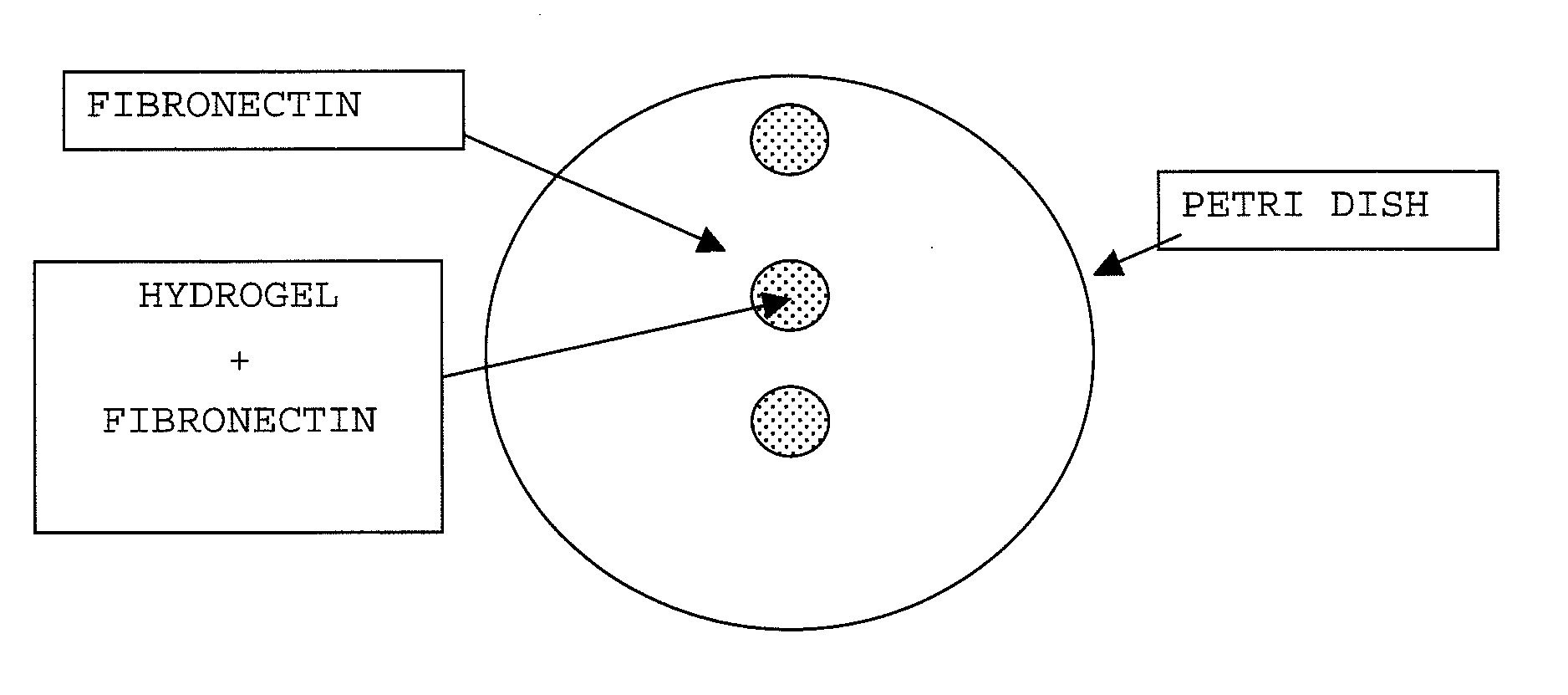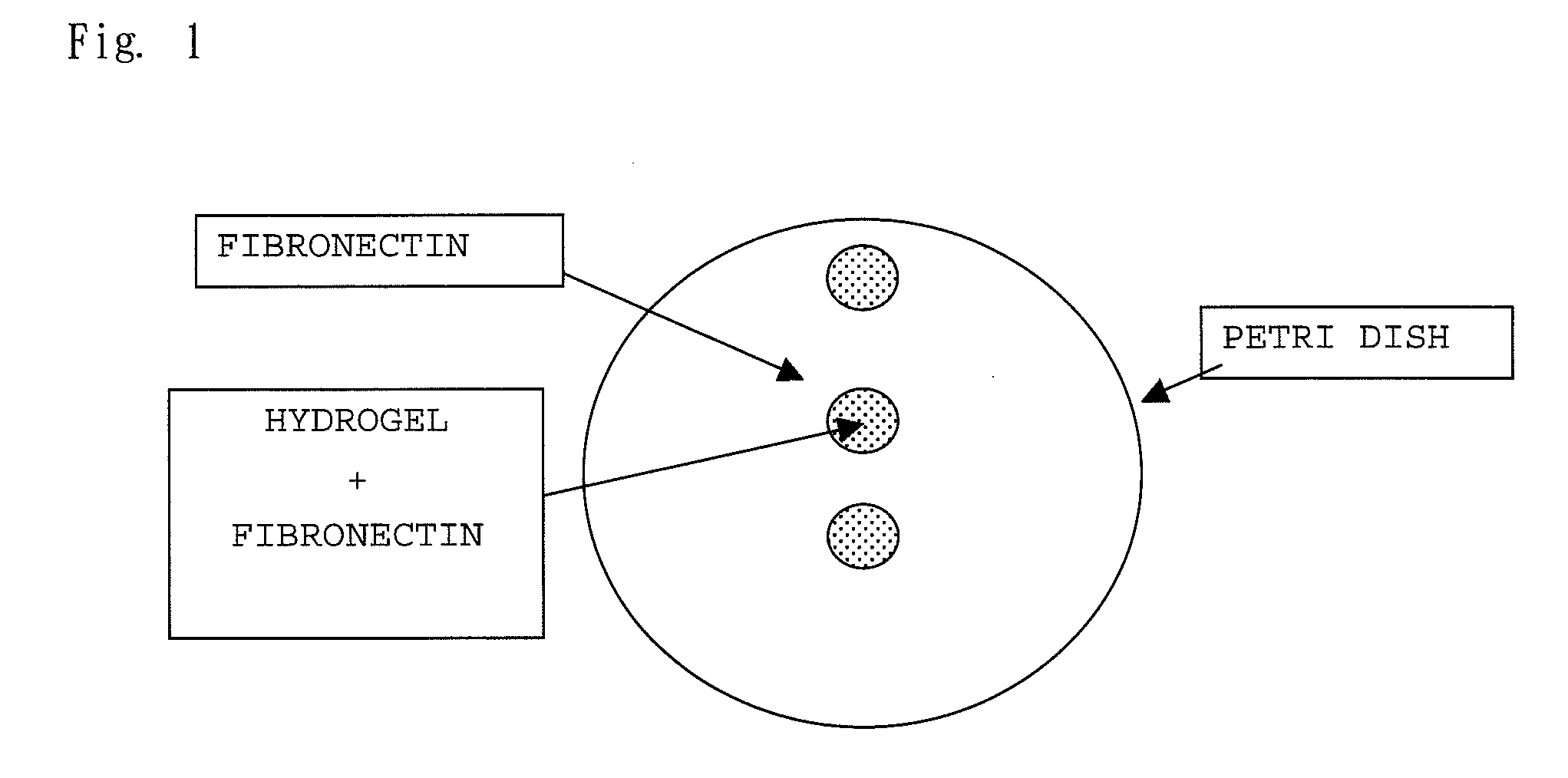Cellulose derivative and method for production thereof
a technology of cellulose and derivatives, applied in the field of cellulose derivatives, can solve the problems of poor adhesion barrier effect, insufficient adhesion barrier, poor retention in the body, etc., and achieve the effect of efficient production, safe use and efficient production
- Summary
- Abstract
- Description
- Claims
- Application Information
AI Technical Summary
Benefits of technology
Problems solved by technology
Method used
Image
Examples
example 1
Cellulose Derivative
[0114]Two hundred milligrams of CMC—Na having an average molecular weight of 2.3 million was dissolved in 40 ml of water, and 40 ml of tetrahydrofuran was added. Then, 169.7 mg of L-α-dioleoyl phosphatidylethanolamine (0.000228 mol; 40 equivalents with respect to 100 equivalents of the carboxyl group of CMC—Na), 48 mg of EDC (0.000251 mol), and 38.4 mg of HOBt.H2O (0.000251 mol) were dissolved in 10 ml of the solution (tetrahydrofuran / water=1 / 1) to be added to the reaction system. After stirring the mixture overnight, the tetrahydrofuran was removed. The mixture was then added to ethanol to cause precipitation, after evaporating some of the water. The ethanol was removed by filtration, and, after re-washing with ethanol, the residue was vacuum dried to obtain a cellulose derivative. The phospholipid content in the cellulose derivative was then measured. The phospholipid content was used to calculate the degree of substitution of (d), based on assumptions that the...
example 2
[0118]A hydrogel was prepared from a cellulose derivative composition obtained as in Example 1 except that 43.8 mg (0.059 mmol) of L-α-dioleoyl phosphatidylethanolamine was added to make the molar equivalent ratio of the repeating unit of the cellulose derivative to the L-α-dioleoyl phosphatidylethanolamine 1:0.13. The complex elastic modulus of the hydrogel was measured to be 287.3 N / m2.
example 3
[0119]A hydrogel was prepared from a cellulose derivative composition obtained as in Example 1 except that 89.6 mg (0.12 mmol) of L-α-dioleoyl phosphatidylethanolamine was added to make the molar equivalent ratio of the repeating unit of the cellulose derivative to the L-α-dioleoyl phosphatidylethanolamine 1:0.26. The complex elastic modulus of the hydrogel was measured to be 291.9 N / m2.
PUM
| Property | Measurement | Unit |
|---|---|---|
| Percent by mass | aaaaa | aaaaa |
| Percent by mass | aaaaa | aaaaa |
| Percent by mass | aaaaa | aaaaa |
Abstract
Description
Claims
Application Information
 Login to View More
Login to View More - R&D
- Intellectual Property
- Life Sciences
- Materials
- Tech Scout
- Unparalleled Data Quality
- Higher Quality Content
- 60% Fewer Hallucinations
Browse by: Latest US Patents, China's latest patents, Technical Efficacy Thesaurus, Application Domain, Technology Topic, Popular Technical Reports.
© 2025 PatSnap. All rights reserved.Legal|Privacy policy|Modern Slavery Act Transparency Statement|Sitemap|About US| Contact US: help@patsnap.com



